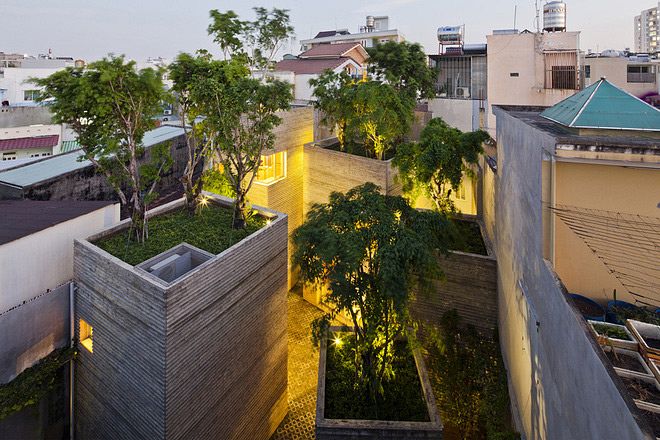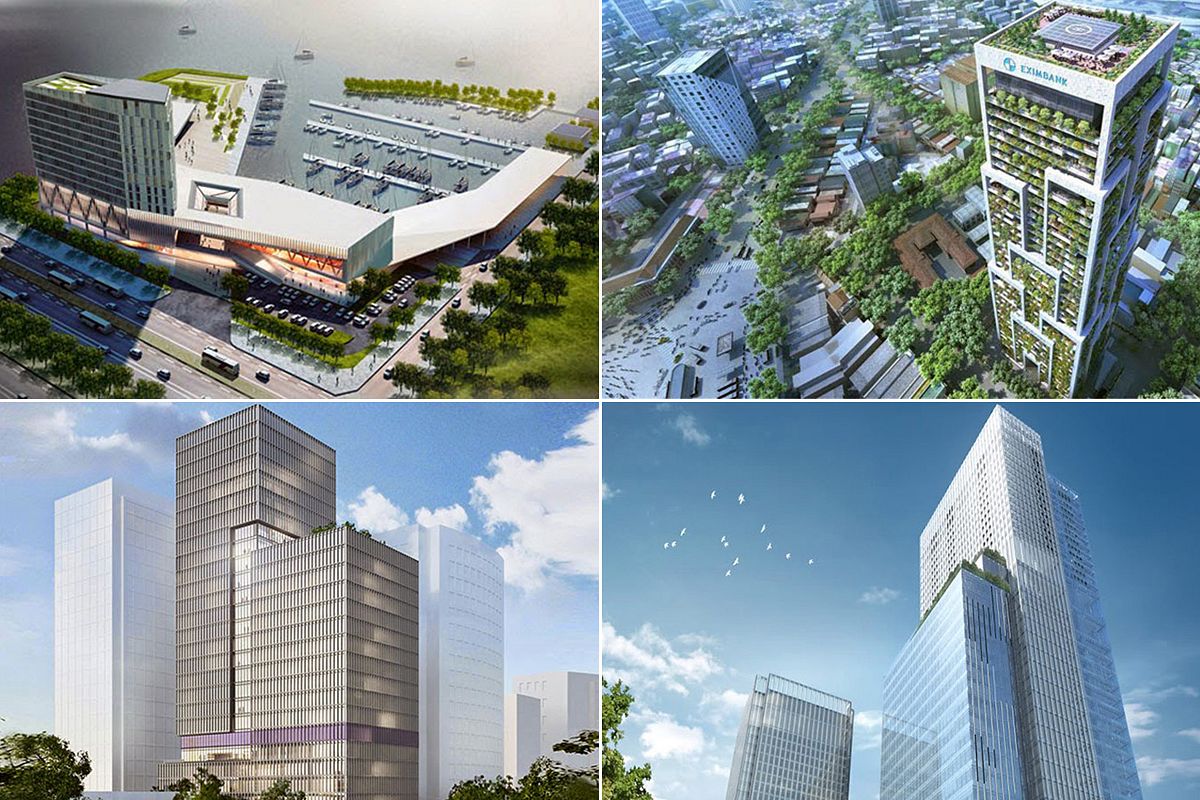Hanoi-based, AHL architects associates continues to develop designs for sustainable urban housing in Vietnam. Their latest project, the 7×18 house, was built with local materials while taking into account geographic and cultural demands.
From the architect. 7×18 house is located in densely populated and chaotic area of Hanoi. Tu Lien village is famous because of fields with Peach trees and Kumquat trees – these two trees are especially popular during Lunar New Year – traditional Vietnamese new year. Location, culture and demands are required to be solved in our design.
The design team along with the owner (young and single man) made an outline for this project with following criteria:
- Saving Energy
- Creating space which is attractive, open but still private and safe
- Using local materials
- Flexibility in use
When analyzing the characteristics of the site area, “introverted living space” has very quickly been decided to develop the structure of space and layout.

Rooms, space, garden are separated according to vertical and horizontal axis. All would create an empty/solid combination in the bulk of the house of 1134m3 (7x18x9). Every place in the house would make the best of natural light and natural ventilation, which is a good idea for electricity savings in daytime. Sun light intensity in the summer can also be controlled by the steel fillets in the front and on the roof.
Related Articles:
- Minimalist 'Nest House' in Binh Duong
- The Coolest House in Binh Thanh?
- Nhabeo House: Bringing Green to the Concrete Jungle
The house is facing south-east with the 7m wide. Moreover, distance between next houses is quite limited (a little bit more than 5m). These two factors seem to be challenged with design task.
The facade is processed by using a system of vertical steel fins combining with 3mm thick of steel leaves. The density as well as the interference of two-way wave of steel leaves depends on the privacy purpose of the room inside. The whole glass façade is retrograded inside to create buffer space to avoid direct sun light in summer but allow winter sun light to go deep into the spaces.

The master bedroom space is connected to the gym on the third floor by round shaped steel stairs, which is located outdoor with the garden. All make a bulk of 343m3 (7x7x7). The old star fruit tree is kept by the owner since their old house. After the house is finished, the star fruit tree will be brought back and grown in the garden on the second floor as a memento.


With the distinctive position in the area for traditional trees such as Peach and Kumquat, the design group has saved the central area of the house for these trees. Together with the fish tank, they make up an interesting and relaxing space.
Naked concrete, ceramic bricks, patterned porcelain bricks and raw wood for interior furniture are the main materials exploit throughout the project. All of them are economical but are processed carefully and suitably for their functions, which brings a new breeze to the conventional materials.
To sum up, the design group have provided the house owner with a distinctive space, satisfying the initial requirements and contribute one more solution to the urban housing scene in Vietnam which is now rather boring and messy.
[H/T Archdaily]














